September 24, 2024 | 10:29 GMT +7
September 24, 2024 | 10:29 GMT +7
Hotline: 0913.378.918
September 24, 2024 | 10:29 GMT +7
Hotline: 0913.378.918
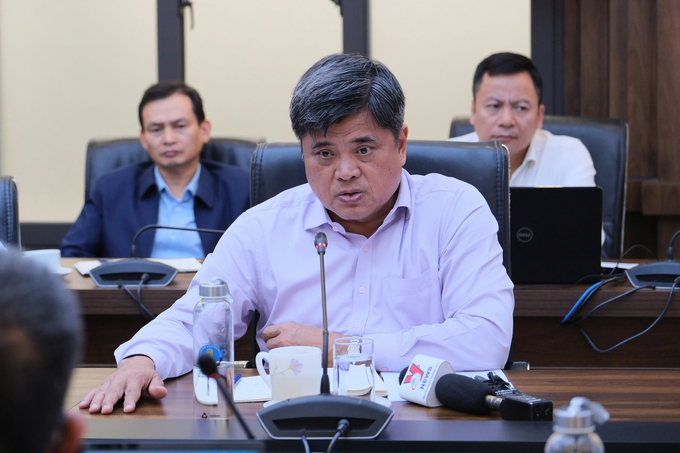
Deputy Minister Tran Thanh Nam: 'The 1M ha Project is not for financial purposes'. Photo: Quynh Chi.
"The most important harvest during the pilot implementation of the One million hectares high quality and low-carbon rice in the Mekong Delta (1M ha Project) is people's awareness. In many areas, people have voluntarily participated in the program after seeing the effectiveness of the project," Deputy Minister Tran Thanh Nam told the World Bank delegation, adding that rice prices and people's incomes have increased steadily. Many businesses have registered to purchase low-emission rice.
Based on data collected from the Institute of Agricultural Environment, Vietnam initially measured the emission coefficient of rice on 50 hectares of the pilot. In the upcoming winter-spring and summer-autumn crops, the Ministry of Agriculture and Rural Development (MARD) will direct the expansion of the pilot area, moving towards measuring the carbon emission coefficient on rice plants.
While implementing emission reduction measures, mainly alternating flooding and drying, this farming process has proven effective in many different geographical areas of the Mekong Delta.
Therefore, the Deputy Minister proposed that the Transformative Carbon Asset Facility (TCAF) soon sign an Emission Reductions Payment Agreement (ERPA) to motivate people and implement the non-refundable aid of USD 20 million this organization has committed.
"The sooner the ERPA is implemented, the sooner people will benefit. In the meantime, Vietnam will continue to improve the quality of carbon credits (obtained through emission reduction measures) and at the same time strengthen farmer training," the Deputy Minister expressed.
The MARD leader also emphasized that several organizations and individuals currently do not understand the purpose of the "1M ha Project". According to him, the project aims to enhance the sustainable value of Vietnamese rice, contribute to reorganizing production, and support people in increasing their income, not the financial aspect.
Vietnam's advantage is that it has successfully implemented the Vietnam - Sustainable Agriculture Transformation (VnSAT) Project, which is the basis for implementing phase 1 of the "1M ha Project" on 180,000 hectares.
The MARD still has several steps to agree with the World Bank, including measurement, reporting, and verification (MRV).
MRV refers to the multi-step process of measuring the amount of greenhouse gas emissions reduced by a specific mitigation activity, such as reducing emissions from deforestation and forest degradation, over some time and reporting these findings to an accredited third party. The third party then verifies the report so that the results can be certified and carbon credits can be issued.
With the results obtained from the five pilot models, Tran Thanh Nam believes that the ERPA with the TCAF will be signed as scheduled in May 2025.
Guo Li, senior agriculture economist in the South Asia Region of the World Bank, informed that the World Bank delegation will work in Vietnam from September 23 to October 2. This implementation step comes after TCAF confirmed Vietnam's Program Information Note (PIN) to support the "1M ha Project" rice project on September 12.
TCAF has approved a total budget of USD 33 million (possibly increasing to USD 40 million), divided into 2 phases. One is USD 15 million (perhaps rising to USD 18 million) under the ERPA. Two is USD 18 million (possibly increasing to USD 22 million) under the Mitigation Outcome Purchase Agreement (MOPA), depending on Vietnam's legal framework and the results of negotiations between the Government and TCAF on the transfer of Internationally Transferred Mitigation Outcomes (ITMOs).
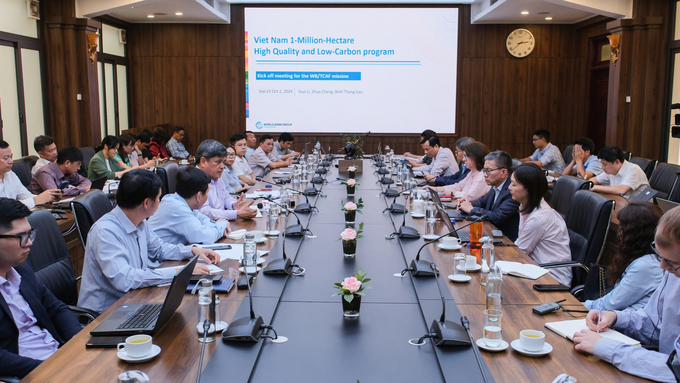
The World Bank delegation will be in Vietnam until October 2. Photo: Quynh Chi.
In addition, TCAF will provide technical assistance worth USD 2 million to carry out capacity-building activities to support the implementation of Article 6 of the Paris Agreement, the MRV system, and other proposals of Vietnam.
The World Bank's wish during this mission is to unify the method of MRV to form transferable carbon emission reduction credits, exchange with TCAF, and use for national NDC commitments.
During their stay in Vietnam, the delegation plans to organize a workshop to raise awareness of relevant ministries and sectors' experiences in accessing carbon markets. At the same time, they will visit the field to consider the possibility of applying emission reduction farming processes (alternate wetting and drying), identify investment needs to apply emission reduction farming measures to accelerate cooperation with TCAF.
Zhou Cheng, a carbon finance specialist based in the Vietnam country office, added that Vietnam should develop a strategy to promote the brand of emission-reduction rice. Currently, many organizations want to approach Vietnam through the MARD to organize the purchase and sale of carbon credits.
According to the World Bank model, it is predicted that by 2030, carbon credit trading will be very active, with a value of about USD 185 million and nearly 2.5 million tons of CO2 exchanged.
The World Bank expert also commented that the "1M ha Project" that Vietnam is implementing is a "mode.". Previously, the largest area of rice with reduced emissions ever used to buy and sell carbon credits was implemented by Ghana and Switzerland in 2022, with about 240,000 hectares in more than eight years.
Thanking the World Bank for its support, Deputy Minister Tran Thanh Nam believes that completing the PIN approved by TCAF will help promote high-quality rice production in the Mekong Delta. After consulting the prime minister, he also committed to prioritizing TCAF in implementing the exchange of carbon credits for reduced emissions.
Translated by Huong Giang
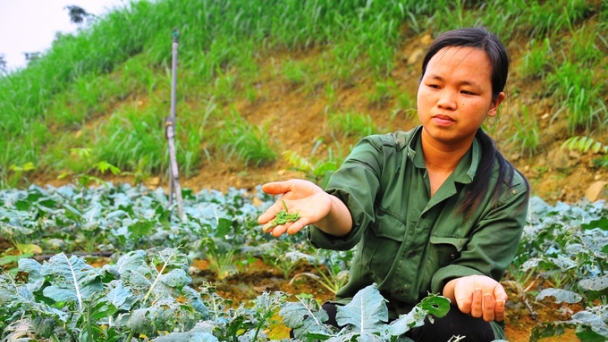
(VAN) Statistics indicate that Hanoi houses approximately 2,000 hectares of organic crops, with various suitable production models yielding significant economic benefits.
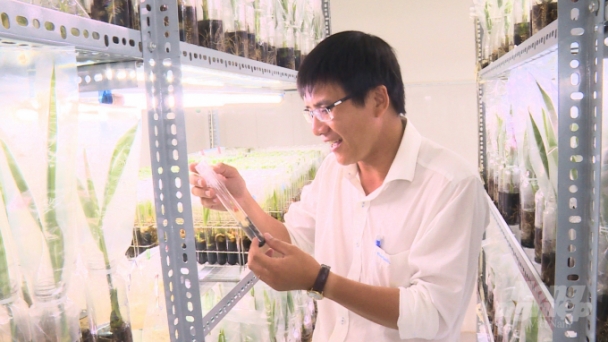
(VAN) After three years of cultivation, tissue-cultured wax coconut trees have thrived, adapting well to the climate and soil conditions of Tra Vinh province. These trees are now bearing thick-fleshed, high-quality wax coconuts.
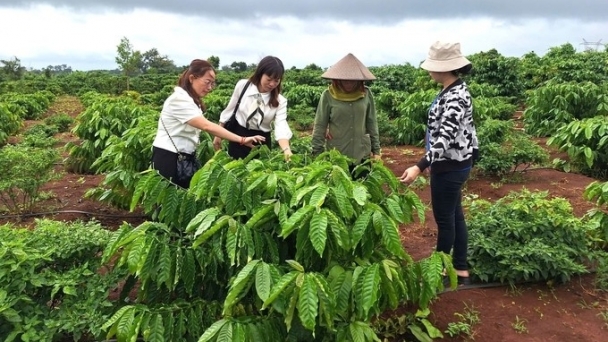
(VAN) Promoting replanting and bringing new quality varieties into production has helped Gia Lai province's coffee industry gradually improve productivity and value in the market.
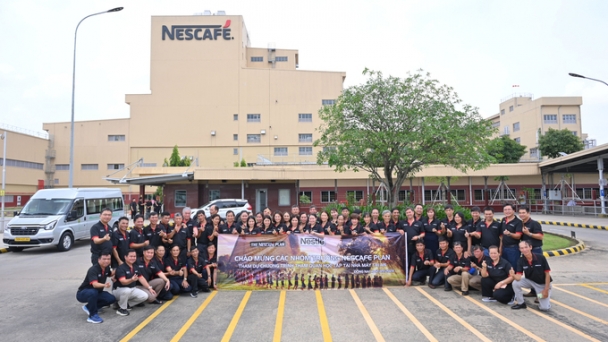
(VAN) Nestle Vietnam recently organized the "Story of Vietnamese Coffee Beans" program at Nestle Tri An Factory, with the aim of motivating farmers to practice sustainable agriculture.
/2024/09/17/2456-1-181215_161.jpg)
(VAN) Thanks to sustainable coffee production, many farmers in the Central Highlands are having a good income and life and contributing to environmental protection and reducing emissions in coffee farming.
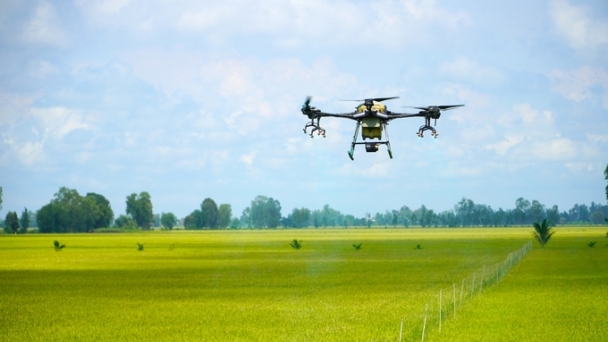
(VAN) Economists and policy experts discussed opportunities and challenges in promoting low-emission rice production through market mechanisms.